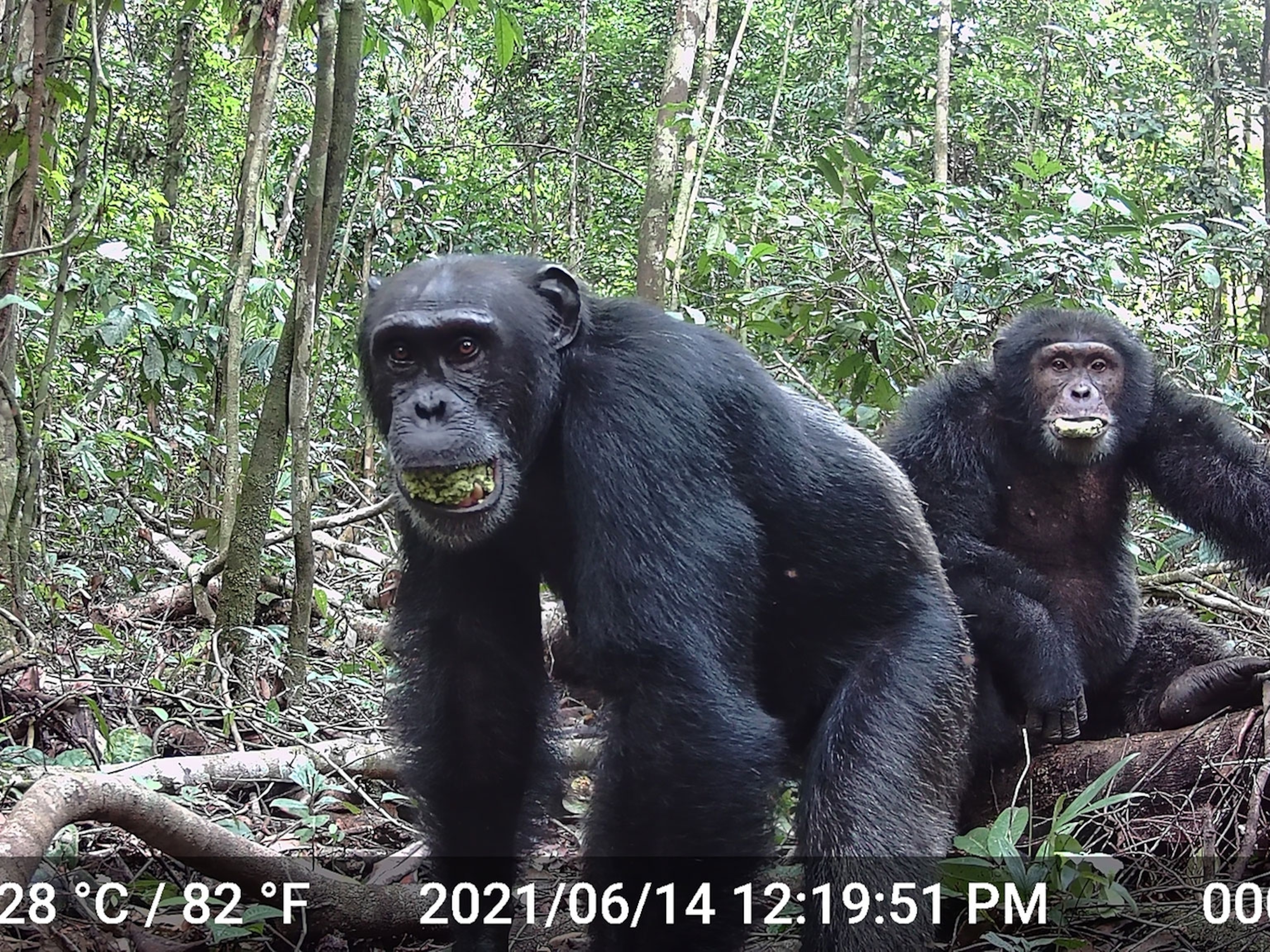Scientists have acquired new data supporting the idea that the last ancestor shared by all living primates walked with the dinosaurs more than 80 million years ago. The results came from a new technique used to reconstruct the course of animal evolution.
Previously, opposing scientific camps estimated that the animal that gave rise to the primates lived as recently as 55 million years ago and as long ago as 90 million years. The newly proposed date is closer to the older end of the range.
That's significant because the older estimate, which was derived from studies based on molecular genetics, identifies the earliest primates as contemporaries of the dinosaurs. The younger date, which was based on fossil records, represents a period after the dinosaurs had already become extinct.
"Our results agree broadly with a molecular estimate [and] contradict widely accepted palaeontological estimates," Simon Tavaré of the University of Southern California and his colleagues reported in the journal Nature.
Their finding sprang from a scientific collaboration that straddled the fields of biology and mathematics and spanned research centers from California to the Swiss Alps.
Working with colleagues from Harvard University, the University of Washington, Chicago's Field Museum, and institutions in England and Switzerland, Tavaré used a novel mathematical approach to help answer a major piece of the evolutionary puzzle.
Past Views
The search for the first primate—that is, the last animal to have been an ancestor of all members of the primate family tree—has long intrigued scientists and others interested in humanity's evolutionary origins.
From the oldest known fossil remains of primates, paleontologists have determined that some ancient members of our evolutionary family lived and died at least as far back as 55 million years ago.
Fossils alone, however, cannot disclose precisely when members of the last common ancestral species began to segregate into distinct populations that eventually gave rise to the modern array of some 200 primate species.
That's because the fossil record is incomplete. Paleontologists can't tell how close any particular specimen was to the progenitor of the primates.
So, to approach the problem from another angle, scientists in the field of molecular genetics have compared subtle differences in the DNA of living primates.
Geneticists can tell how recently two species diverged from a common ancestor from information etched in the organisms' genes: The fewer differences researchers find between two genetic codes, the more recently the species parted evolutionary company.
Using this method, geneticists have concluded that about 90 million years have elapsed since all living primates shared their last common ancestor.
Based on such studies, evolutionary biologists such as Pennsylvania State University's Blair Hedges believe that early primates lived alongside the great reptiles.
"[Primates and other] major groups of mammals evolved for tens of millions of years before the dinosaurs became extinct," Hedges said. That mass extinction occurred about 65 million years ago.
Fleshing out the Fossil Record
To reconcile the genetics-based date with the comparatively young estimates of paleontologists, Tavaré and his colleagues fashioned an evolutionary tree of the primates as it's known from fossils.
Not wanting to depend entirely on what paleontologists have turned up, the researchers then fleshed out the rudimentary tree with educated guesswork. They used mathematical equations to predict how many species of primates are not represented in the fossil record, and to predict when and for how long those species may have lived.
The resulting model—based loosely on hard evidence but expanded to take into account species that lived and died out but remain unknown to science—suggests that the earliest primate lived about 81.5 million years ago, long before the age of the oldest fossils uncovered by paleontologists.
"Naturally," said Hedges, "I am pleased with this result because it shows agreement with our molecular-clock studies."
Tavaré's team suggested that the earliest primates might have been small, nocturnal creatures that inhabited tropical forests. But, assuming they did exist that long ago, numerous forms could have evolved prior to the fateful cataclysm that wiped out the dinosaurs 65 million years ago.
That event, presumably caused by a giant impact from outerspace, didn't wipe out all primates living at the time, but probably spared relatively few of them, Tavaré theorized. Those primates that survived would have subsequently evolved into myriad species.
"Of course, this is all speculation," Tavaré acknowledged. "We have not found any fossils in that bin yet."
In fact, scientists may never know how these proposed lost kin of ours looked—or be certain they existed at all—unless paleontologists someday recover fossilized remains.





